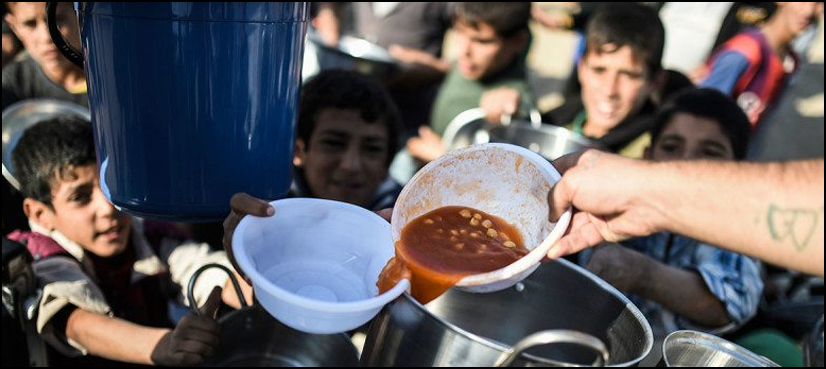By Staff Reporter
ISLAMABAD: Millions of people in Pakistan are enduring persistent hunger and malnutrition, a crisis deepened by relentless weather extremes and economic hardship, according to a new report from the United Nations.
The 2025 Global Report on Food Crises, by the Food and Agriculture Organisation (FAO), projects that between November 2024 and March 2025, 11 million people—22 percent of the analysed population—will face crisis or worse levels of acute food insecurity.
This dire situation spans 68 flood-affected rural districts in Balochistan, Sindh, and Khyber Pakhtunkhwa, with 1.7 million people classified as being in emergency conditions, one step below famine on the global hunger scale.
This year’s analysis covers a broader swath of the country than previous reports, with the population under review rising 38 percent from 36.7 million in 2024 to 50.8 million in 2025. The addition of 25 districts makes direct comparisons to last year’s peak challenging, but the numbers still paint a grim picture.
During the same period a year earlier—November 2023 to January 2024—11.8 million people, or 32 percent of the analysed population, faced similar levels of acute food insecurity across 43 rural districts in the same provinces. Of those, 2.2 million were in emergency conditions.
While the situation has improved slightly from the previous lean season, the report cautions that weather extremes continue to batter livelihoods, leaving millions on the edge of survival. The findings highlight the fragile state of food security in a nation still reeling from the devastating floods of 2022.
The report lays bare a malnutrition crisis that has taken root, particularly in Balochistan and Sindh, where acute malnutrition has plagued communities for years. Between 2018 and early 2024, global acute malnutrition (GAM) rates in these provinces consistently exceeded 10 percent, soaring above 30 percent in some districts—double the World Health Organisation’s emergency threshold.
Children bear the brunt of this hardship. From March 2023 to January 2024, 2.1 million children aged 6 to 59 months suffered from acute malnutrition, their diets lacking both the quality and quantity needed to thrive. The winter months of December to February only worsen the strain, as food prices climb, jobs dry up, and access to markets dwindles.
Pregnant and breastfeeding women are also hard-hit, with high rates of acute malnutrition contributing to a troubling number of babies born with low birth weight, especially in Sindh and Khyber Pakhtunkhwa. Health woes pile on, with diarrhea, acute respiratory infections, and malaria spiking in winter, fueled by inadequate sanitation and scarce safe drinking water, a lingering legacy of the 2022 floods that ravaged water systems, particularly in Sindh.
Pakistan, a lower-middle-income nation, is no stranger to nature’s extremes. Floods and droughts have long tested its resilience, but the 2022 monsoon floods marked a turning point, submerging vast areas of Balochistan, Sindh, and Khyber Pakhtunkhwa. In 16 districts of Balochistan and Sindh, nearly half the population, 49 percent, faced high levels of acute food insecurity in the aftermath.
The damage lingers. Destroyed water systems have left communities without reliable sanitation or clean water, while blocked roads and poor healthcare-seeking habits hinder access to medical care. Economic instability adds another layer of misery, with many families unable to afford even basic necessities as prices soar during the lean season.
Funding shortages have further crippled efforts to respond. Nutrition services, vital for stemming the tide of malnutrition, remain under-resourced, leaving gaping holes in support for the most vulnerable. The report warns that in 2025, climate shocks and acute food insecurity will likely push already high malnutrition levels to new extremes.
Pakistan’s hunger crisis is not a new story, but its persistence is a call to action. The FAO report traces years of analysis, starting with Sindh in 2017-2018, expanding to Balochistan and Sindh in 2019 and 2021, and now encompassing all three flood-prone provinces. The data reveals a nation teetering on the edge, where slight improvements are overshadowed by the scale of need.
Without robust intervention, the outlook is bleak. The cycle of food insecurity and malnutrition threatens to ensnare yet another generation, with children and women paying the steepest price. The report points to urgent priorities: rebuilding shattered infrastructure, bolstering climate resilience, and expanding access to healthcare and nutrition services.
Copyright © 2021 Independent Pakistan | All rights reserved




